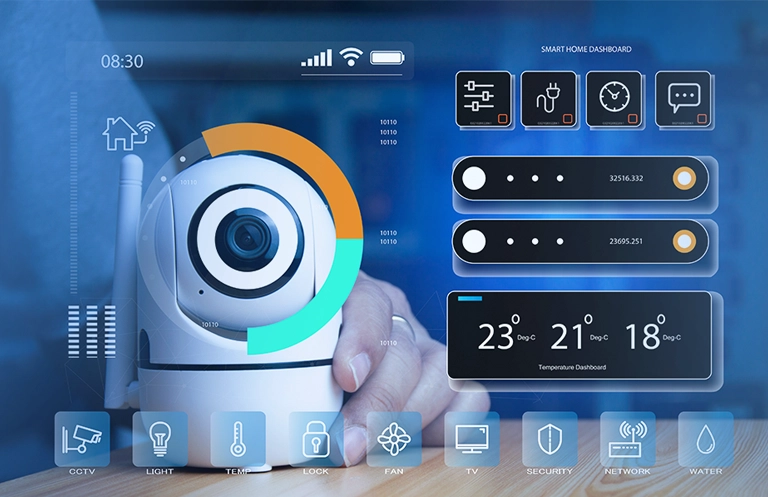The automotive industry is witnessing a massive transformation in technology and applications assisting autonomous vehicles and ADAS systems. Technology is surprisingly booming and providing every day, new and exciting ways to interact within a vehicle and to communicate with the outside world while driving.
The emergence of new in-vehicle technologies is seeking new ways to deal with the advanced electronics within a vehicle and tremendous amount of data generated by them.
One thing is common within all the newer technologies, which is their requirement for bandwidth. Earlier there were very specific in-vehicle applications like body control, chassis control, powertrain, which used to generate very less amount of data, just in few kbps. But gradually, the need of higher bandwidth started realizing by the vehicle manufacturers and OEMs, as the applications to support new age autonomous functions, connectivity, ADAS systems, high end infotainment systems and vehicle electrification requires high bandwidth of data.
“Automotive Ethernet Market worth $4.4 billion by 2024”
What Is Automotive Ethernet
Automotive Ethernet refers to a set of Ethernet-based networking standards tailored for in-vehicle communications. It provides high-speed, low-latency data transfer between the various electronic modules in a car. The automotive Ethernet standards are derived from existing Ethernet variants but adapted to meet the specific demands of the automotive domain like weight, cost, and reliability. The physical layer utilizes unshielded twisted pair wiring enabling lightweight and inexpensive connectivity. Data speeds range from 100 Mb/s to 10 Gb/s across standards such as 100BASE-T1, 1000BASE-T1, and 10GBASE-T1 multi-gig automotive Ethernet. This high bandwidth enables advanced functionality through rapid transmission of large data volumes between powertrain systems, ADAS, infotainment, comfort features, and other in-car electronics.
Need for Ethernet in Autonomous Vehicles
The advanced driver assistance systems (ADAS) and V2X connectivity are two main pillars of the autonomous vehicles. Where ADAS is based on camera, RADAR and LIDAR based sensors, V2X connectivity is enabled by hundreds of sensors backing for vehicle-to-vehicle, vehicle-to-network, vehicle-to-infrastructure, vehicle-to-pedestrian and vehicle-to-utility. Apart from ADAS and V2X, precise telematics systems for in-vehicle navigation, AI and ML based applications and powerful signal processing helps in achieving high level of vehicle automation.
More sophisticated the system is, more will be the complexity it has to handle in E/E systems. These high end systems generate, process and consume large amount of data in real-time. A self-driving vehicle of level 4 and level 5, contains multiple LIDAR, RADAR and Camera modules which generate data in few gbps and tbps. To process this huge amounts of data in real time with very low level of latency, a reliable, high speed network is required and Automotive Ethernet is a right fit here.
Evolution of Automotive Ethernet
The evolution of in-vehicle networking from CAN bus to CAN FD has been phenomenal to manage high speed data transmission from just 1 mbps to 8 mbps respectively.
CANbus was developed by Bosch in early 90’s to support in-vehicle networking for powertrain, chassis and body electronics. Gradually, LVDS, LIN, Flexray, MOST, and CAN FD came into existence to assist dash cams, videos, power breaks, power seats, mirrors, and other accessories in a car.
Nowadays intelligent ECUs and complex electronics systems in smart cars need super-fast communication network to manage very high bandwidth of data. For example, LIDAR based ADAS sensor for lane detection and other ADAS functions uses connection of at least 70mbps for one sensor and as the number of sensors grows for multiple ADAS applications, it is impossible for networking protocols to manage such high bandwidth of data.
Despite of enormous challenges related to robustness, changing temperature and huge amount of real-time data coming through in-vehicle sensors and intelligent ECUs in a vehicle, automotive industry has adopted ethernet for in-vehicle communication. The implementation of automotive ethernet can accommodate high bandwidth of data in real time and ensure seamless functioning of the in-vehicle systems.
Some of the features and specifications of Automotive Ethernet are:
- Switched Network: Unlike bus technology, automotive ethernet is point to point networking technology where one node or electronic unit are connected with another unit. To establish connection between multiple nodes, a switch is being introduced in the system, which enables multiple ECUs to communicate with other and routes the traffic to different nodes with in a network based on their physical address.
- Automotive-specific Ethernet standards: To meet the requirements of the automotive networking, 100Base-T1 and 1000base-T1 are the automotive specific ethernet standards. 100BASE-T1 uses unshielded single twisted-pair cable to transmit the data (at 100 mbps) and enables the communication of audio, video, connected car, firmware/software and calibration data within vehicles using audio video bridging (AVB).
- Cost efficient: Automotive applications uses audio and video streaming and Flexray and CAN are not suitable for such applications as their throughput is just 10 mbps. Whereas automotive ethernet has starting base rate of 100mbps, which is comparatively much more cost effective then other networking protocols. The wiring used in automotive ethernet for vehicles are much lighter and efficient compared to traditional cabling used for in-vehicle connectivity. Light weighted wiring allows manufacturers to reduce the connectivity costs upto 80% and weight upto 30%.
- Networking Topology: In automotive technologies several different topologies are used. In vehicle networking, point to point is one of the commonly used topologies. Most of the ethernet applications used in automotive uses star topology, where all the nodes or ECUs are connected to a central switch. The in-vehicle infotainment systems, which are built on automotive ethernet mostly have star topology and the safety critical applications in the vehicle uses ring topology.
Technologies for Automotive Ethernet
Automotive Ethernet overcomes many limitations of other serial bus protocols. There are also many other technologies which are mandatory for automotive ethernet:
Autosar
Automotive Open System Architecture (AUTOSAR) is an open and standardized automotive software architecture jointly developed by automobile manufacturers, suppliers and tool developers to support standardization in interfaces between application software and basic vehicular functions. Autosar helps in establishing common ECU software architecture for all the AUTOSAR members.
One Pair Ether-Net (OPEN)
One pair ethernet is an alliance of automotive technology providers to encourage research, development and adoption of ethernet based communication in automotive networking applications. OPEN has introduced standards for testing the in-vehicle ethernet systems in switches, ECUs. OPEN has helped in deploying 100BASE-T1, 1000BASE-T1, and 1000BASE-RH physical layers to be used within Automotive Ethernet.
Power over Ethernet
Power over ethernet powers the devices in the vehicle and eliminates the requirement of additional power sources (AC power or battery). PoE also reduces the wiring in the vehicle and allows data transfer between vehicular devices at usual speed.
Energy Efficient Ethernet
Energy efficient ethernet minimizes the power consumption in vehicular functions by turning off network segments when engine is off and uses energy efficient ethernet when engine is on.
Time Synchronization
New age automotive functions require high precision time synchronization in ECUs to complete the tasks without lag. Automotive ethernet network is capable of managing time synchronization. IEEE 802.1AS is a standard used for time synchronization in time sensitive automotive applications like real time audio, video, ADAS application and more.
AV Bridging
In automotive ethernet network audio and video signals are transported using audio-video bridging. AV Bridging is based on IEEE802.1 specifications that enables local ethernet networks to stream signaling, transport and synchronization of the audio and video streams.
Diagnostics Over IP
DoIP is a vehicle diagnostics protocol based on ISO 13400 standard, which analysis data from the on-board computers and update firmware in the cars. DoIP enables remote vehicle diagnostics by managing communication between external tester tool and ECUs. DoIP protocol uses dedicated diagnostics Ethernet connections and runs over TCP/IP.
Automotive ethernet is a reliable and much faster networking protocol which is fueling the emerging technologies in automotive industry like self-driving cars, vehicle to everything connectivity, ADAS, infotainment systems and more.
eInfochips as an automotive engineering services and solutions provider assist automotive companies to establish high speed in-vehicle communication protocols like CAN, CAN FD, Flexray, MOST and automotive ethernet. Know More on Automotive Engineering Services and Solutions.













